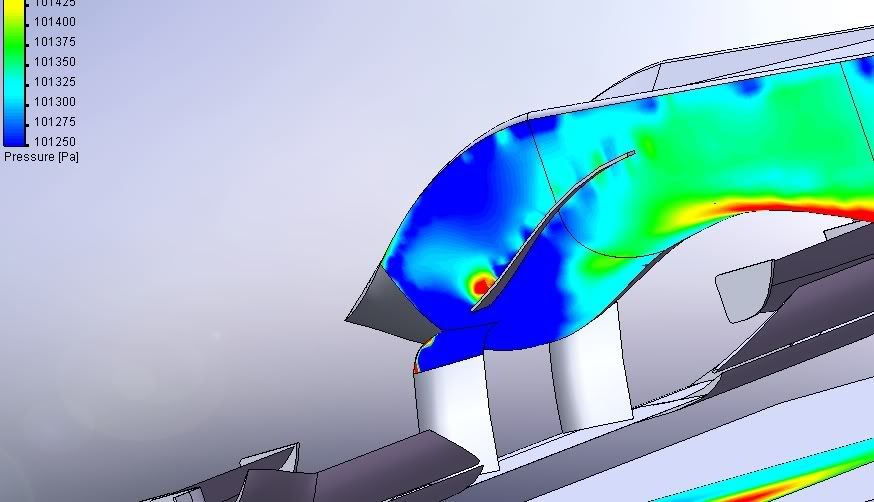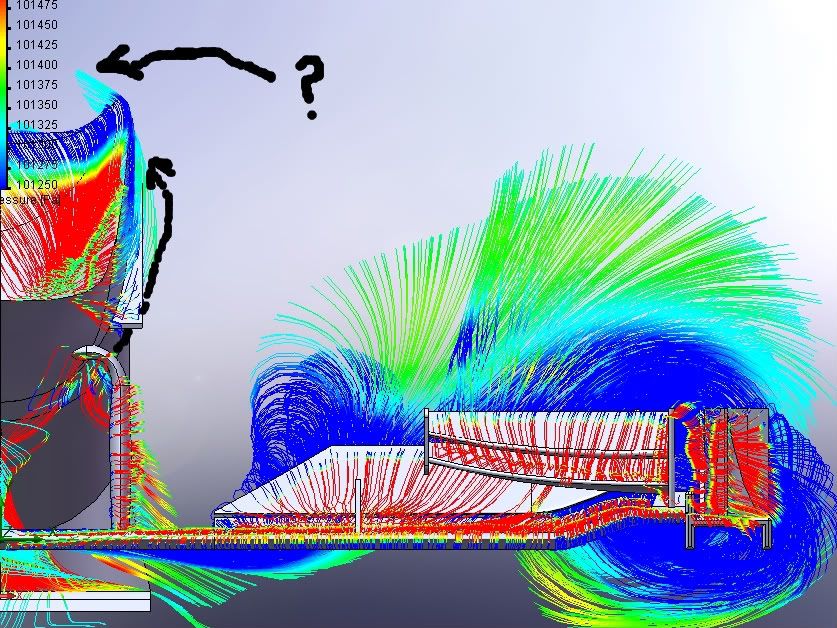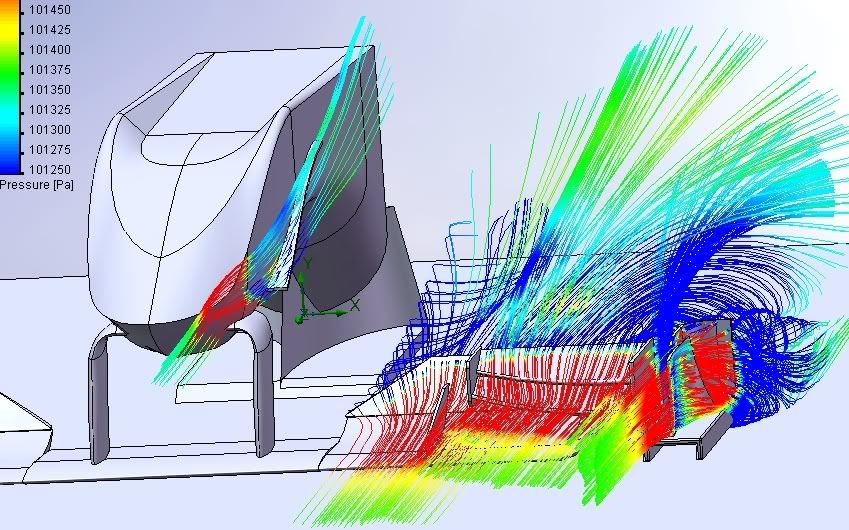F1eng, sounds like you are working with an F1 team or Lockheed Martin.

I don't know what it is that is so holy that you cannot disclose what is happening. I am cool with that, but i am still curious.
If you don't feel like exposing you work, i understand, but it doesn't make believing you any easier. You know those guys with the "end is near" sandwich board signs? See what i am saying?
Anyway, I will just state things that I observe, if it's wrong feel free to jump in.
The nose dive planes are key to the Merc design, obviously. They have some influence on the underside of the nose and above as well.

They create, or maintain the low pressure area behind them, somewhat shielding the underside of the nose from the flow to the side.
They create vortices too i guess (couldn't get them with the level of detail i could squeeze out) don't know how useful they are there, since I didn't build the rest of the car downstream.
They divert the flow diagonally upward (upwash of some sort) along the flank of the bodywork as well. This diagonal flow goes over the edges of the V resulting in a vortex curling over and inward toward the centre line (? in the pic). Could have something to do with the cooling intakes at the roll hope as well downstream. I don't know.

someone asked for flow lines earlier.

see the upwash along the flank behind the dive plane? ^^

wing is inaccurate in parts i could not make out from pics.
Computational domain was small, to reduce calculation time, wish i could have found the time to do the wheels and side pods at least. Would have seen longer stream lines too.
Some of the flow lines toward the inside of the wing should have something to do with the floor and radiator openings. I can't say since I didn't make any more parts

End plates are self explanatory.
This whole thing is beyond me to sum up everything, there are some angled views which are interesting, especially with the bodywork behind the nose.
I'll just stop now.









